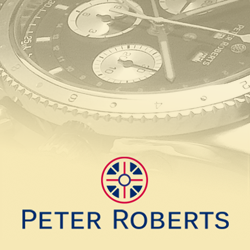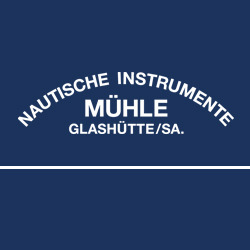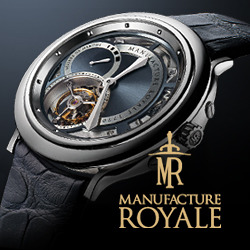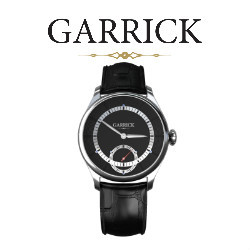PARMIGIANI FLEURIER COLLECTION BUGATTI
Bugatti, THE purveyor of supercars prior to WWII, has been revived for the 21st Century by Volkswagen. Intent on not repeating the mistakes of the ill-fated relaunch a decade ago, the company wants to ensure that anything associated with the ‘million euro’ Bugatti Veyron (due in 2003) would reflect the car’s stature. Thus, VW knew better than to ‘badge-engineer’ the partnering wristwatch by simply sticking the Bugatti logo onto an existing watch. Not only did they opt for an all-new and therefore unique movement, they chose Parmigiani Fleurier to create and manufacture it. The Swiss make – one of the most highly-respected of the new auteur brands – rose to the challenge with an all-mechanical design worn in the manner of the great drivers’ watches of the 1930s. Its ‘transverse’ layout is unlike that of any other, and it’s so novel that the watch boasts see-through panels above, below and to the sides. Fashioned from 18k white gold, the Bugatti will be issued as a severely limited edition. Expect to pay in the £40-50,000 bracket, and to join a queue, for this is an instant collector’s item.
A. LANGE & SOHNE LANGE 1 MOONPHASE
No success story in watch-dom is more fascinating nor impressive as that of A. Lange & Sohne, probably Germany’s greatest maker. Like any company unfortunate enough to have been located in East Germany, the original company was subjugated by the Communists and turned into merely another cog in the machine. But Walter Lange, a direct descendant of the founder, dreamt of restoring the make to its former glory. When the Wall came down, Lange wasted no time in reviving the brand, succeeding beyond all reason: within five years of the re-birth, the company’s watches were grouped with the finest in the world, alongside Patek Philippe, Vacheron Constantin and Audemars Piguet. The watch which re-established the name was the Lange 1, instantly recognisable for its asymmetric dial, a sublime movement visible through the glass back and – above all – its ‘big date’ apertures, copied by more brands than any other development of the 1990s. There wasn’t much one could add to so complete a watch, but Lange cleverly added one more feature: moonphase, positioned under what before was just the second hand. The Lange 1 Moonphase sells for £13,000 in red or yellow gold, or £18,900 in platinum.
F.P. JOURNE CHRONOMETRE RESONANCE
Along with Roger Dubuis, Michel Parmigiani and Philippe Dufour, F.P. Journe is part of a new breed of watchmaker, one steeped in history. All of the watchmakers of this calibre have extensive experience in the restoration of great timepieces of the past and infinite respect for the fathers of the industry – especially Abraham Louis Breguet. Having worked on a Breguet during his apprenticeship, he was inspired to create his own watches using Breguet’s developments such as the tourbillon and the twin-movement ‘chronometre a resonance’. While the tourbillon is the more familiar of Journe’s specialties, and also a ‘flavour of the month’ for most high-end watch brands, it is the Chronometre Resonance which is the more distinctive and, for some more fascinating. The reason for two movements? They compensate for each other’s minute discrepancies, resulting in greater timekeeping accuracy. An added bonus is that with two movements, you get two sets of dials, independent of each other so that the user can set them for two different time zones – a boon for travellers. The Chronometre Resonance is available in red gold for £22,050 or platinum for £23,800, while a special limited edition in platinum retails for £31,250.
JAEGER-LeCOULTRE MASTER COMPRESSOR MEMOVOX
Among the long-forgotten features of wristwatches revived during the comeback of mechanical timekeepers was the alarm. A euphonic alternative to the nasty beep-beep of digital watches, mechanical alarms present a gentle but insistent metallic ringing. Jaeger-LeCoultre produced its first alarm wristwatch in 1950, the Memovox gaining an automatic movement in 1956. It re-emerged as part of the company’s highly-coveted Master Hour range in the 1990s, each watch tested for 1000 hours before reaching the client. Ever deft at combining features, Jaeger-LeCoultre again turned to the past for the latest Memovox, the Master Compressor, so named because it employs a device first seen in the Geophysic chronometers of 1958. Instead of threaded screw-down crowns to seal the watch from moisture, dust and dirt, the Compressor uses a technique requiring only a half-turn to close or release the crowns, all the while more secure against the elements. Waterproof, robust and highly legible, the Master Compressor Memovox is a sure-fire candidate for Sport Watch of the Year. Prices range from £4115 for steel to £12,060 for precious metals.
JAEGER-LeCOULTRE REVERSO NEVA
If any watch deserves to be called an ‘icon’, it’s the Jaeger-LeCoultre Reverso. Celebrating its 70th anniversary, the Reverso emerged after its late 1980s rebirth as one of the best-selling and most-coveted of all luxury watches, and as popular with women as it is with men. A new tradition each year is to attend the watch fairs to learn what new variants Jaeger-LeCoultre has created for this evergreen timepiece, the company having already fitted nearly every function to the famous, rectangular, flip-over case. Recognising the increasing appeal of diamond-studded watches, the company has fashioned a white gold case encrusted with more than 550 diamonds weighing approximately 2.2 carats. The style has been dubbed ‘snow’ gem-setting, in which large sections of the metal case are concealed by individually cut and fitted diamonds. The look is completed with a black satin and leather strap, blued steel hands, a striped dial and a crown boasting a blue sapphire. The Reverso Neva is exclusive to Jaeger-LeCoultre’s Bond Street salon, priced at £27,590.
(Boom Issue 1, 2002)










